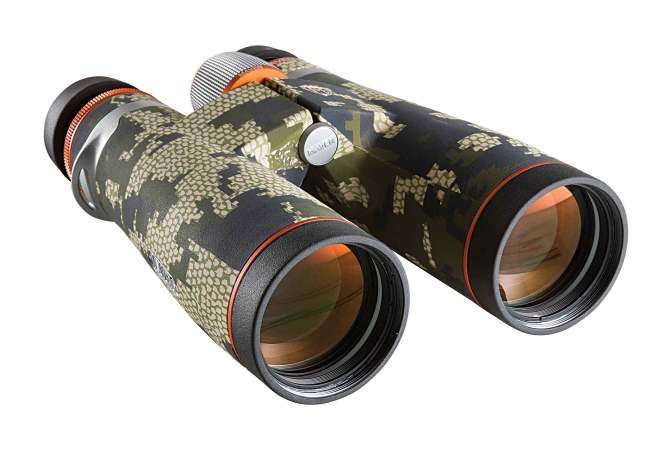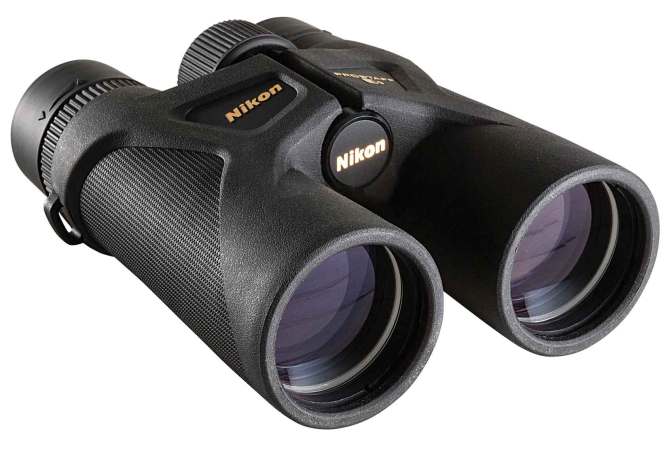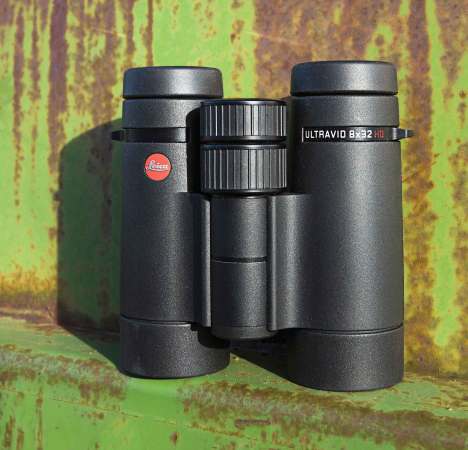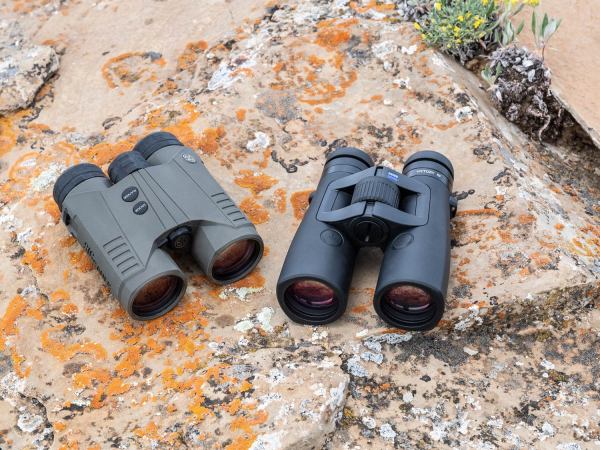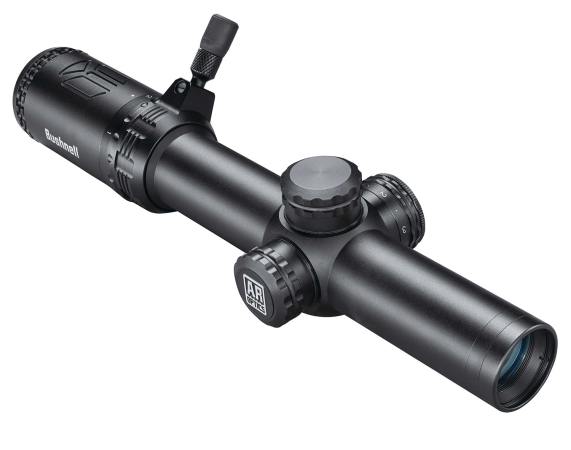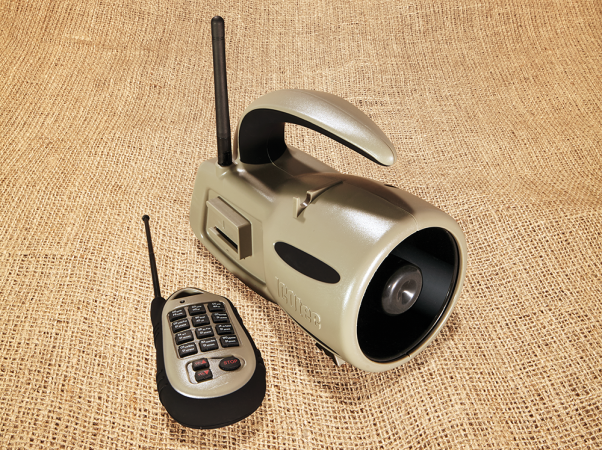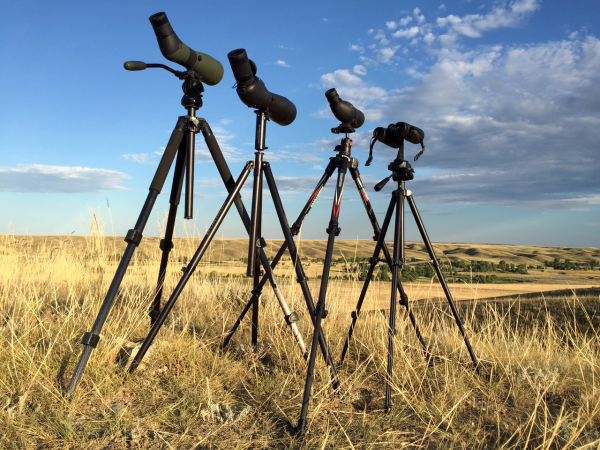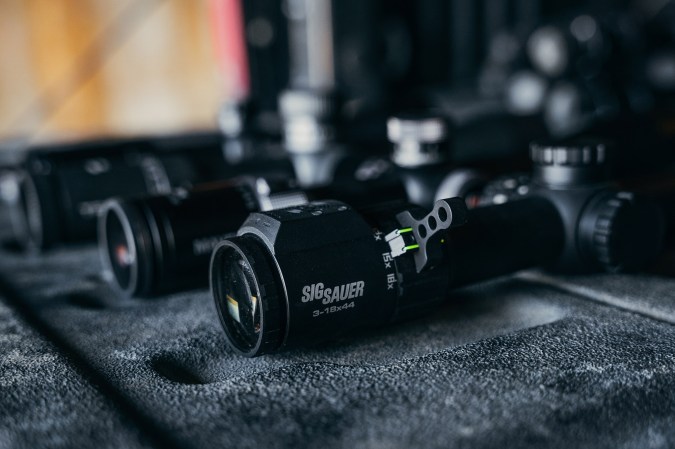We may earn revenue from the products available on this page and participate in affiliate programs. Learn More ›
When I was a kid, a neighbor hunted so close to our farm’s boundary that his treestand practically hung across our fence line. Over the course of several deer seasons, I’d sometimes train my binocular on Willie’s stand and see him pointing his bolt-action rifle back at me.
“I don’t think he’d ever shoot you,” my dad said, a little too casually. “Willie glasses with his riflescope because he can’t afford a binocular.”
He could now. Based on submissions to this year’s optics test, there is a binocular for almost any type of hunter and every budget. Affordability is relative, but most hunters would agree that a $3,000 binocular is expensive, no matter how good its glass. A $200 optic that makes your eyes hurt isn’t worth the money. It’s in that middle ground, with optics that range in price from $300 to $1,000, that we seek to balance performance with price. Our test is designed to reveal good optics at a reasonable cost.
The direct-to-consumer trend that we noted last year is gaining ground in the optics industry, with another premium brand bypassing the traditional retail model and using the internet to promote and deliver its product. We’re also seeing established brands reach for the entry-level market, introducing good all-around binoculars priced at such a point that there’s no excuse for using your riflescope to glass anything that you don’t intend to shoot.
Editor's Choice – Full-Size Bino: Leica Trinovid HD 10×42
Score: 88.9 • Price: $1,000
Upshot: Excellent optics in a reasonably priced Leica
With its Trinovid HD, Leica has joined fellow European brands in producing a mid-priced optic that maintains the high quality of the company but is accessible to most American hunters. In this way, Leica is following the lead of Zeiss and Swarovski, whose Conquest and CL Companion lines, respectively, feature very good glass but are made in facilities where costs of production are lower than in the optical capitals of Europe. If these price-point products don’t have the optical horsepower of the premium lines, the majority of sportsmen won’t notice the difference in most glassing situations.
There is every chance that hunters will never notice the shortcomings of this $1,000 Portugal-made Leica, because we could find very few. Although it didn’t win either the resolution or the low-light test, it scored near the top in those, and in every other attribute, making it the clear choice for the best full-size bino in this year’s field.
The center-hinge Trinovid has the solid, substantial feel and perfect balance of a premium Leica binocular, and the eyecups and focus controls are precise, smooth, and lovely.
Great Buy: Tract Toric 10×42
Score: 88.2• Price: $664
Upshot: Tremendous value
if this freshman effort from a couple of veterans of the sports-optics industry is any indication of their intentions, you’ll be hearing about Tract for years to come. The Toric is a wonderfully bright and durable premium optic that prompted the most telling quote of our test: “I expected this binocular to cost several hundred dollars more than it does,” said panelist Dale Manning.
The rest of us testers nodded our heads in agreement; the Toric was the unanimous choice for our Great Buy award. If that endorsement has you rushing to the store to buy a Toric, I’ll save you the trip. You can only buy Tract optics through the company’s website. The system is designed to cut out retailers and their marked-up pricing, say Tract co-founders Jon LaCorte and John Allen, both alumni of Nikon’s sports-optics division.
The Tract shares the solid build, tight controls, and edge-to-edge clarity that defines Nikon’s higher-end optics. Internally, the Toric was a top performer in our test, turning in one of the best combined low-light and resolution scores, owing to its high-end Schott glass and premium coatings. It also won points for its stylish graphite-and-black finish and its classy packaging.
Hunters will appreciate the Toric’s compact frame; its grippy finish; its tack-sharp focus; and its face-fitting eyecups, which adjust as smoothly and positively as a fine watch.
Sig Sauer Zulu9 11×45
Score: 86 • Price: $1,200
Upshot: Aggressive tactical style
This big, hand-filling binocular ran away with the top resolution score in our test, evidence of very good glass and coatings inside its stout magnesium chassis. Optically, it’s first-rate. Externally, it has a strong martial appearance. As its name suggests, it’s a tactical binocular, with angular controls and an aggressive style. It’s easy to imagine a field marshal using the Zulu9 to view enemy combatants approaching his position.
We liked the Zulu’s tacky rubber finish, comfortable balance, tight focus controls, and stylish graphite armor.
Maven B.2 9×45
Score: 85.75 • Price: $1,130 as shown
Upshot: Customizable furniture
Maven pioneered the bespoke binocular with last year’s B.1. For a few dozen dollars above the base price, online customers can add their own bling. The Wyoming company has extended the concept to this very good magnum-sized binocular, the B.2, which we dressed in Kuiu’s Verde camo.
The base optic is tight, built around bright Japanese glass. The configuration is optimized for Western hunters, but the 9×45, which won the low-light test, would serve any sportsman looking to maximize twilight viewing. If we have a ding, it’s that the Maven’s finish is a bit too slick.
Steiner HX 8×42
Score: 76.2 • Price: $800
Upshot:
Steiner lives in the shadow of its German neighbors, Zeiss and Leica. Maybe that’s because it’s something of a quirky brand, clinging to stylistic flourishes like its distinctive bat-wing eyecups and green-hued optical coatings.
Once you get past the HX’s “Steinerisms,” you’ll find it to be a very good hunting optic. The HX has a lively balance, thanks to its tough and light polycarbonate chassis and durable center-hinge design. Its glass is good and bright, and we detected no flaring or peripheral fuzziness. We liked its grippy rubber finish and its very good close focus.
Minox BF 10×42
Score: 71.8 • Price: $180
Upshot: Affordable German brand
The BF by Minox is a great example of the trend toward affordable Euro-branded optics. This entry-level binocular is priced within reach of almost any American sportsman, and the BF is worth every Lincoln penny. It achieved a surprisingly good resolution score, and the controls are tight and precise. How did Minox do it? By sourcing the BF in Asia and by building the optic around an aluminum chassis. This is a good value in a solid optic. We had some concerns about its durability, but if the BF doe
Leupold BX-3 Mojave Pro Guide HD 10×50
Score: 71.6 • Price: $810
Upshot: Disappointing optics
Leupold could be forgiven for casting about to find a binocular that’s as distinctive and as dead-nuts reliable as its Gold Ring riflescopes. Unfortunately, this Pro Guide HD is probably not it. There’s nothing wrong with the Japanese-sourced Mojave, but there’s nothing particularly distinctive about its performance, either. We liked the grippy hand feel of the angular open-bridge design, but the finish is a little slick. We liked the cool Kryptex Typhon camo pattern, but the optics disappointed. We detected flaring in harsh light, and the Mojave’s resolution score was one of the lowest in our test.
Trijicon HD 10×42
Score: 71.3 • Price: $849
Upshot: first bino from trijicon
Michigan-based Trijicon has an established reputation in the riflescope industry as a company that produces very good scopes with battery-free illumination. And its ACOG combat optic is the industry standard for AR battle sights. This binocular is Trijicon’s first foray into passive viewing optics, and it’s a great effort. The glass is good, and the armor, with a handsome graphite finish, is striking. Once you acquire an image, it’s sharp and bright. Unfortunately, the binocular’s controls are its undoing. The focus is shallow and strays, and our sample’s eyecups tended to collapse under hard use.
Athlon Cronus ED 10×42
Score: 68.3 • Price: $500
Upshot: Stout build, average glass
With a full line of spotting scopes, riflescopes, and binoculars, this new brand has an optic configured for nearly every outdoors pursuit. The 10×42 Cronus ED that Athlon submitted for our test is a decent inaugural effort. The compact, closed-hinge design is rugged and tight, and the grippy texturing grabs the hand and holds on. But the controls are sloppy and vague, and despite having extra-low-dispersion glass, the optics are disappointing, exhibiting flare and causing headaches during extended glassing sessions.
Bushnell Trophy Xtreme 12×50
Score: 66.5 • Price: $200
**Upshot: Solid price-point binocular
If you’re looking for an entry-level binocular for a beginning hunter or naturalist, this new Bushnell is worth considering—but just don’t go for the 12×50 configuration that was submitted for our test. This hefty binocular has good glass and tight-enough focus controls, but it’s a little big for the beginning hunters for whom it’s intended. Instead, go with the 8×42, 10×42, or even 8×32 models. You will appreciate the sharp image, tight focus, and portability. If you’re looking for a bino to keep in your pickup or cabin, this 12×50 is a good choice.
Konus Konusrex 10×42
Score: 65.2 • Price: $270
Upshot: Decent controls and glass
This open-bridge binocular represents the pinnacle of Konus’ product line, and it’s not bad. The controls are relatively tight, and while testers didn’t care for the moss-green finish on the chassis, that’s a very minor criticism for a good entry-level optic. Optically, the Konusrex delivers an adequate image, even in the dim light beyond legal shooting hours. We’ve detected significant edge distortion and flaring on previous Konus products, but the Konusrex exhibited neither. While the Konus doesn’t render the image quality of a European optic, it doesn’t cost nearly as much as one, either.
Nikon ProStaff 3S 8×42
Score: 64.1 • Price: $120
Upshot: Great price on an average bino
Consider the polycarbonate-chassis binocular. On the one hand, it can feel light and flimsy compared to magnesium construction. But on the other hand, after a long day of hiking steep country, the lightweight plastic won’t bog you down. Nikon’s new entry-level binocular has both those attributes. It’s light and a little fragile feeling, but after a hard week of testing, we couldn’t find any indication that it won’t hold up to tough treatment. The optics of the ProStaff 3S are adequate, but they’ll frustrate low-light glassers. Still, it’s a good price for an entry-level binocular from one of the most established brands in sports optics.

Mid-Size Binos
Editor's Choice – Mid-Size Binos: Leica Ultravid HD-Plus 8×32
Score: 85.5 • Price: $1,950
Upshot: A stunning optic
This is perhaps the finest mid-size binocular we’ve ever tested. It’s so good, in fact, that it would have scored quite high in our field of full-size binoculars, those built around objective lenses from 42mm to 50mm. The newest iteration of the venerable Ultravid line, the HD-Plus features a new prism design, a premium grade of Schott glass, and a new process that uses ultra-high temperatures to bake glare- and refraction-taming coatings onto external lens surfaces.
All that optical performance would be diminished in a clumsy body, but the Ultravid is compact, tight, and stylish. The magnesium-and-titanium chassis is balanced and tough, the center-hinge design is strong and durable, and the focus and diopter controls are smooth and tack-sharp. I normally lean toward 10×42 configurations for most big-game hunting, but I would not hesitate to use this 8×32 on an open-country hunt for pronghorn antelope or mule deer.
The Leica won our low-light test (tying with the Maven) and turned in one of the top resolution scores in the field. It won praise from testers for the wide range of subjective assessments, including ergonomics and durability. The only category where it left us wanting was price/value. It’s hard to justify spending $2,000 on a mid-size binocular, especially when there are so many other good choices available. But if you are looking to invest in a single 8×32 optic, you can’t do better than this outstanding, class-leading Leica.
Great Buy – Mid-Size Bino: Maven B.3 8×30
Score: 84 • Price: $500
Upshot: nimble binocular
Confession time: Since our optics test back in March, I’ve lived with this Maven binocular. It’s gone with me on hunting trips to New Zealand and Missouri, and it stays in my pickup to deploy for frequent impromptu glassing sessions.
The reason it’s become part of my kit is because it’s so handy. The oversize focus wheel and wide-set barrels fit a single hand perfectly, making it as easy to grab as a pint glass. The controls are tight and sharp, and the B.3 is sized right for dropping in a lumbar pack or an overnight bag.
If we had a ding on the Maven, it’s that the B.3’s optical performance wasn’t quite up to the standard that we’ve come to expect from the company that specializes in higher-end Japanese-built products. While the 30mm B.3 excelled in low-light brilliance, its resolution score was middling, and we noted some flaring and peripheral distortion.
Still, this is a whopping bargain on a handy gem of a binocular.

Score: 77.75 • Price: $250
Upshot: Versatile, lightweight optic
With a great hand-feel and very good image, this open-hinge binocular from Sig Sauer is a quite good and affordable all-around optic. While the binocular is aggressively styled, presumably to appeal to the “tacticool” market, its angular profile and grippy controls make it easy to hold and deploy.
Optically, it’s a decent performer, and the polymer frame is light and nimble—enhancing its capability as a one-hand optic. The controls of the Zulu3 are a little fatiguing; the focus wheel is spongy, and the diopter and eyecup controls felt mushy. But this is a whale of a value in a good and handy binocular.

Score: 77.5 • Price: $300
Upshot: Pocket-size travel bino
A pocket-size travel optic configured along the same lines as the Steiner, the Zeiss surprised us by turning in the top resolution score in our mid-size bino category. It also did better than we expected in our low-light test, evidence that the ED glass inside the petite chassis is up to the German company’s standards.
The tiny controls of the binocular make one-hand deployment difficult. But if you’re looking for a high-performance travel optic, you might consider the Terra ED Pocket. It would also be at home in a turkey vest and in a pared-down treestand kit, especially in woodland environments where visibility is limited.

Score: 67 • Price: $350
Upshot: Compact and handy
To be fair, this binocular is more of a travel optic than one you’d use for hunting. Its size and features make it look like an opera glass, and scores for versatility and comfort reflect its limited utility. Our test team unanimously concluded the Steiner’s controls are puny and frustrating to use, its slick finish is difficult to hold, and its blingy silver furniture is bound to spook wildlife.
As you might expect from an optic with 24mm objectives, the Steiner fared poorly on our low-light test, even though its resolution score was higher than we expected. It won points for style and portability.
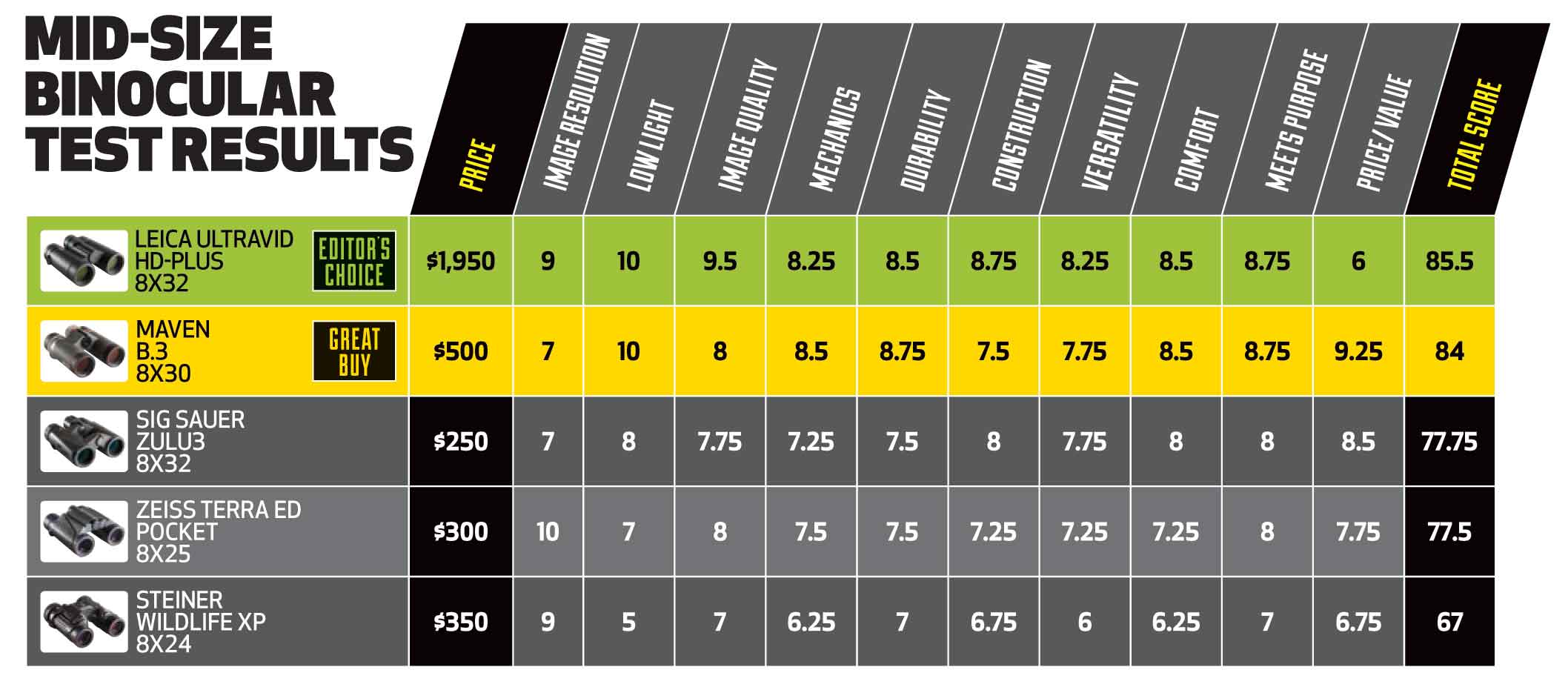
How We Test
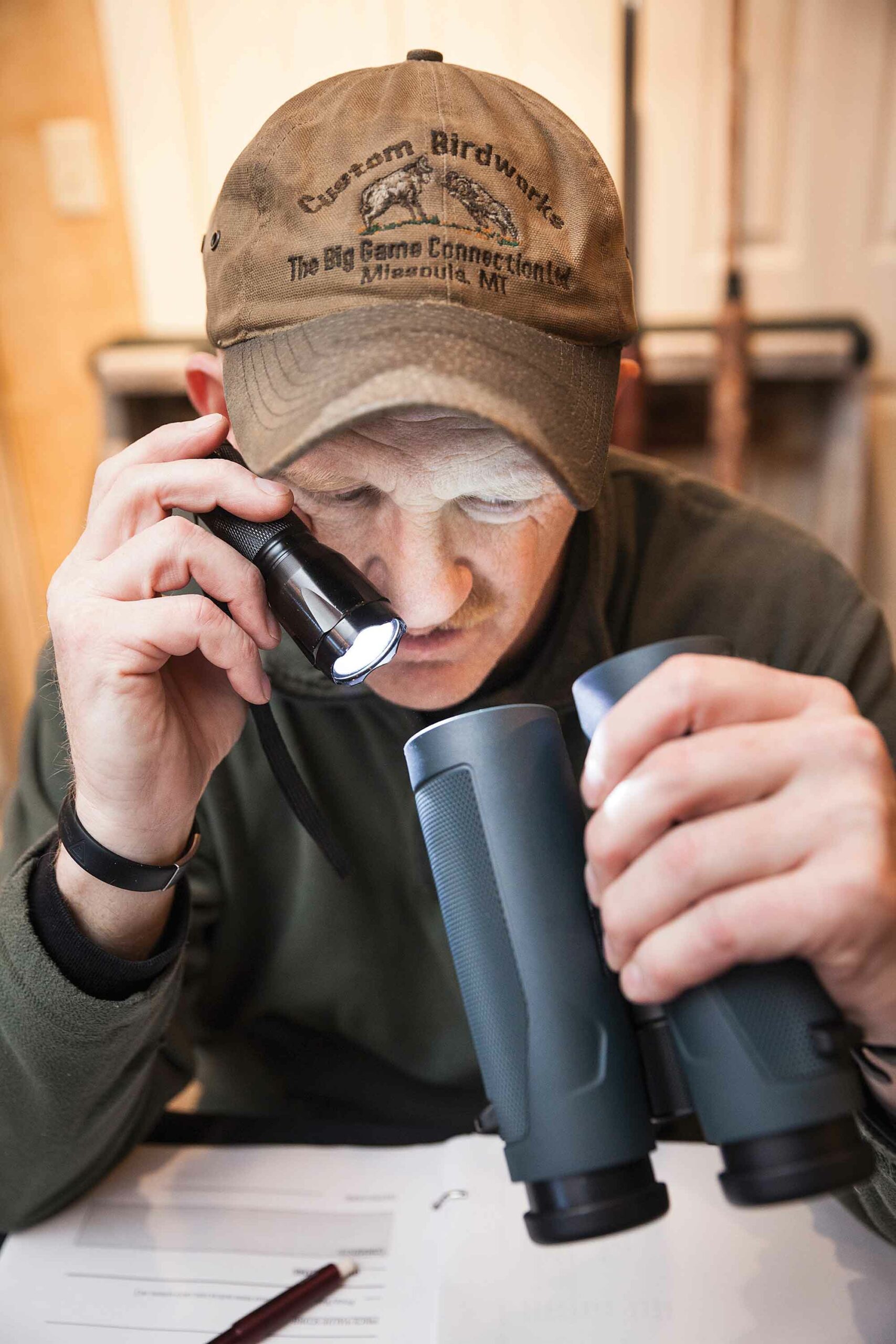
Our binocular test is designed to determine the optical performance of submissions using measurable, repeatable criteria. But it’s also designed to capture those qualitative attributes familiar to most hunters: How does it feel in your hand? How responsive is the focus control?
We measure each binocular’s optical resolution using a standard Air Force resolution target. This test indicates the sharpness of the glass and uncovers any optical aberrations. Our low-light test, conducted over the course of several evenings, measures brightness. Our subjective testing rates the functionality and versatility of each binocular. The highest overall score gets our Editor’s Choice award. The binocular with the highest price/value score wins our Great Buy award.





